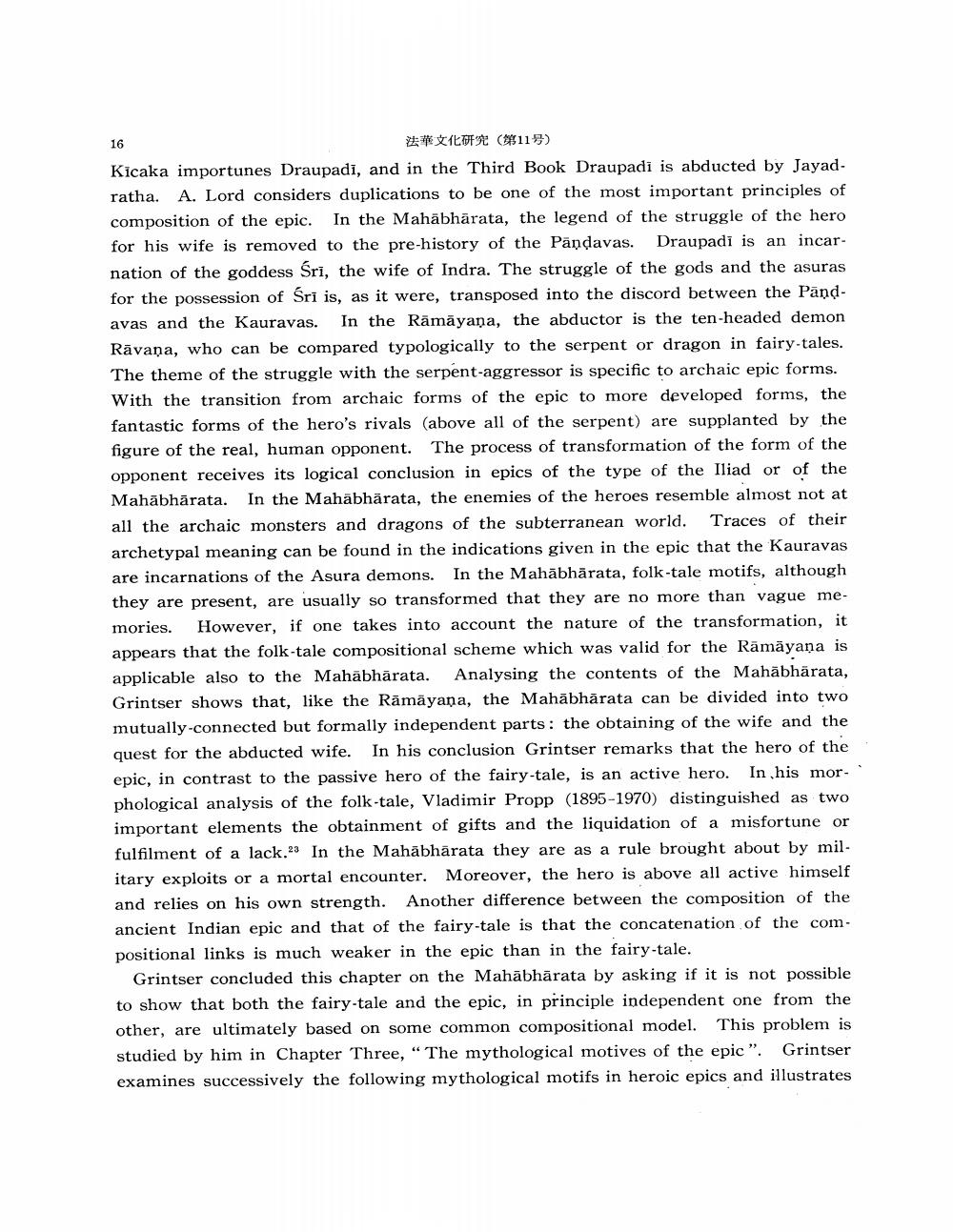________________
法華文化研究(第11号)
Kicaka importunes Draupadi, and in the Third Book Draupadi is abducted by Jayadratha. A. Lord considers duplications to be one of the most important principles of composition of the epic. In the Mahabharata, the legend of the struggle of the hero for his wife is removed to the pre-history of the Pandavas. Draupadi is an incarnation of the goddess Śrī, the wife of Indra. The struggle of the gods and the asuras for the possession of Śri is, as it were, transposed into the discord between the Pandavas and the Kauravas. In the Rāmāyaṇa, the abductor is the ten-headed demon Rāvana, who can be compared typologically to the serpent or dragon in fairy-tales. The theme of the struggle with the serpent-aggressor is specific to archaic epic forms. With the transition from archaic forms of the epic to more developed forms, the fantastic forms of the hero's rivals (above all of the serpent) are supplanted by the figure of the real, human opponent. The process of transformation of the form of the opponent receives its logical conclusion in epics of the type of the Iliad or of the Mahābhārata. In the Mahabharata, the enemies of the heroes resemble almost not at all the archaic monsters and dragons of the subterranean world. Traces of their archetypal meaning can be found in the indications given in the epic that the Kauravas are incarnations of the Asura demons. In the Mahabharata, folk-tale motifs, although they are present, are usually so transformed that they are no more than vague memories. However, if one takes into account the nature of the transformation, it appears that the folk-tale compositional scheme which was valid for the Rāmāyaṇa is applicable also to the Mahābhārata. Analysing the contents of the Mahabharata, Grintser shows that, like the Rāmāyaṇa, the Mahabharata can be divided into two mutually-connected but formally independent parts: the obtaining of the wife and the quest for the abducted wife. In his conclusion Grintser remarks that the hero of the epic, in contrast to the passive hero of the fairy-tale, is an active hero. In his morphological analysis of the folk-tale, Vladimir Propp (1895-1970) distinguished as two important elements the obtainment of gifts and the liquidation of a misfortune or fulfilment of a lack.23 In the Mahabharata they are as a rule brought about by military exploits or a mortal encounter. Moreover, the hero is above all active himself and relies on his own strength. Another difference between the composition of the ancient Indian epic and that of the fairy-tale is that the concatenation of the compositional links is much weaker in the epic than in the fairy-tale.
16
Grintser concluded this chapter on the Mahabharata by asking if it is not possible to show that both the fairy-tale and the epic, in principle independent one from the other, are ultimately based on some common compositional model. This problem is studied by him in Chapter Three, "The mythological motives of the epic". Grintser examines successively the following mythological motifs in heroic epics and illustrates




